Abstract
A solar box cooker (SBC) was constructed with a cooking area deep enough to hold several 3.7-liter jugs of water, and this was used to investigate the potential of using solar energy to pasteurize naturally contaminated water. When river water was heated either in the SBC or on a hot plate, coliform bacteria were inactivated at temperatures of 60 degrees C or greater. Heating water in an SBC to at least 65 degrees C ensures that the water will be above the milk pasteurization temperature of 62.8 degrees C for at least an hour, which appears sufficient to pasteurize contaminated water. On clear or partly cloudy days, with the SBC facing magnetic south in Sacramento, bottom water temperatures of at least 65 degrees C could be obtained in 11.1 liters of water during the 6 weeks on either side of the summer solstice, in 7.4 liters of water from mid-March through mid-September, and in 3.7 liters of water an additional 2 to 3 weeks at the beginning and end of the solar season. Periodic repositioning of the SBC towards the sun, adjusting the back reflective lid, and preheating water in a simple reflective device increased final water temperatures. Simultaneous cooking and heating water to pasteurizing temperatures was possible. Additional uses of the SBC to pasteurize soil and to decontaminate hospital materials before disposal in remote areas are suggested.
Full text
PDF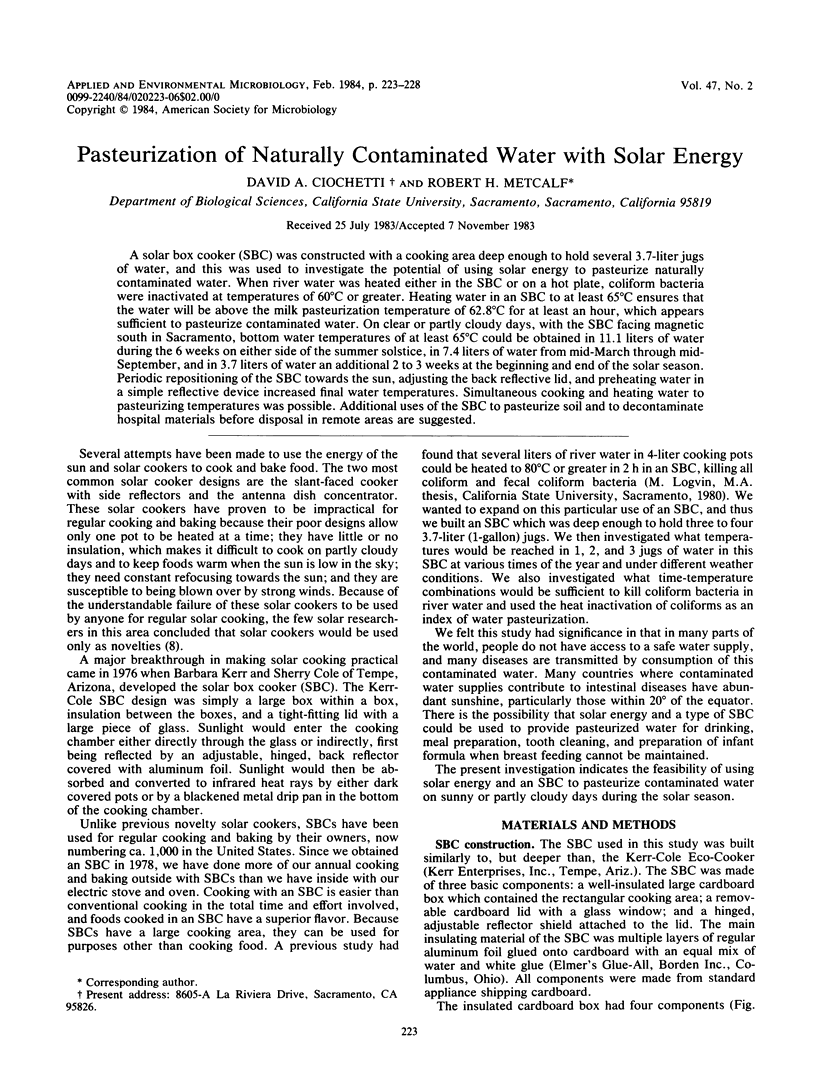

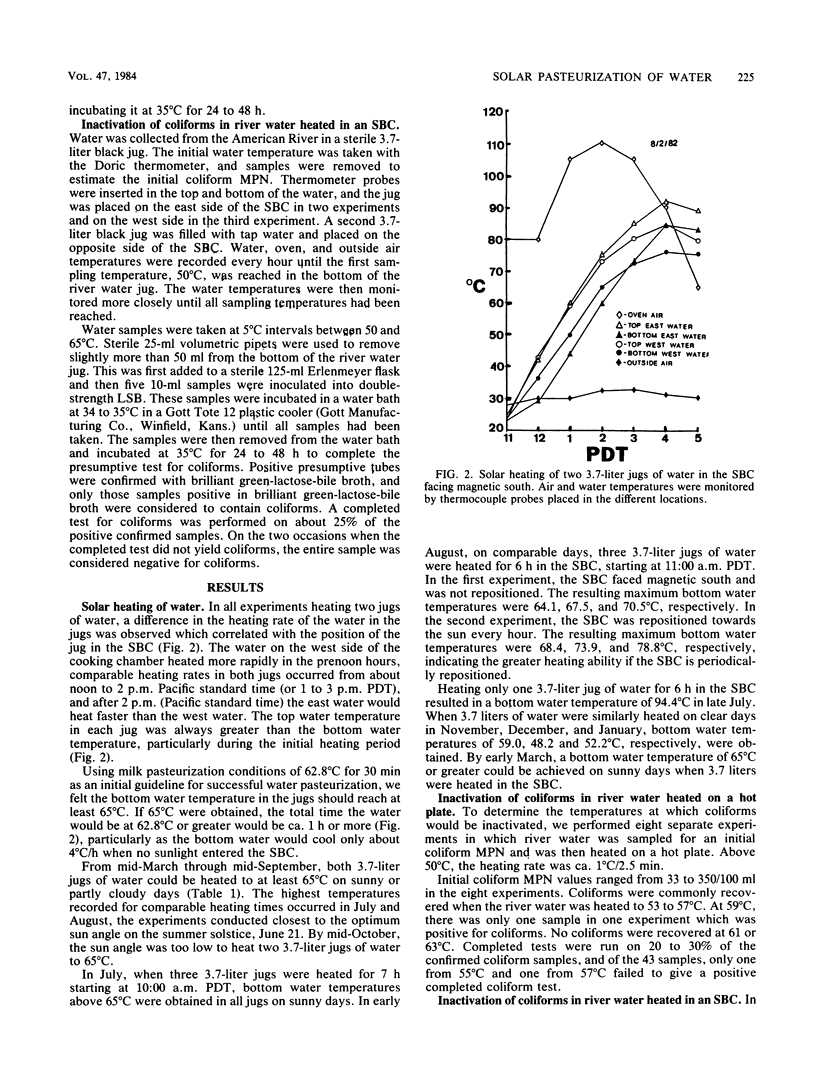
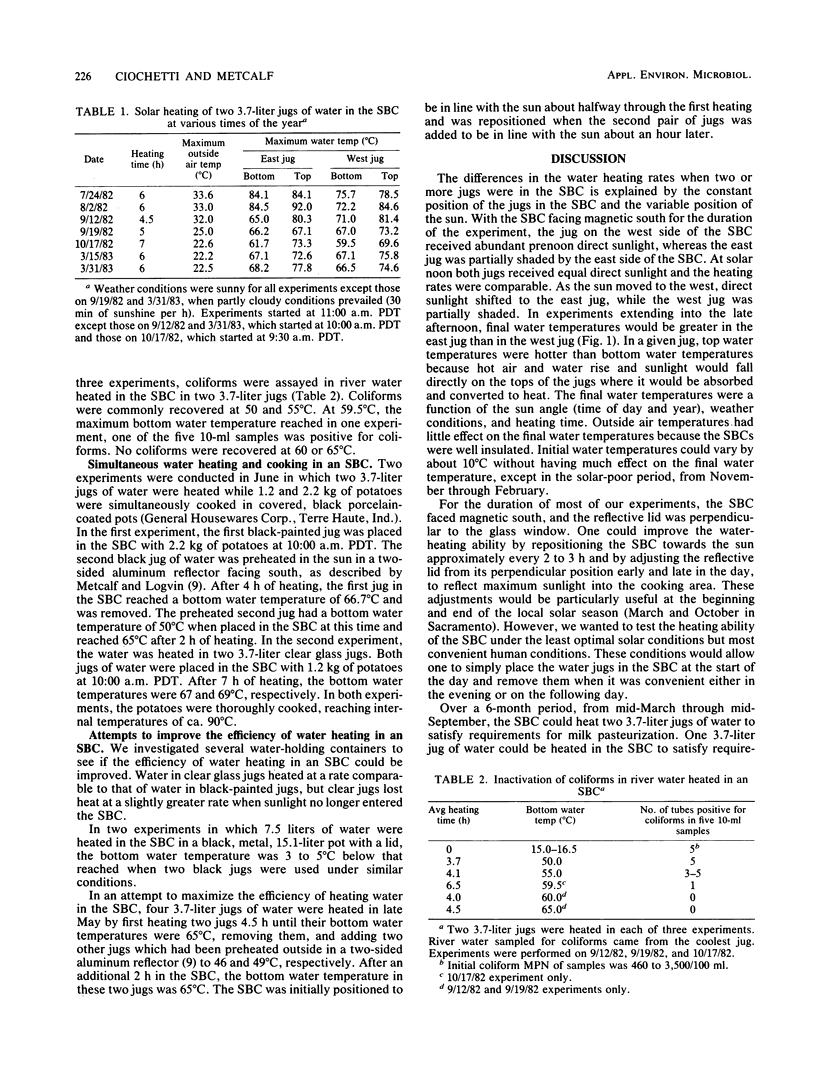
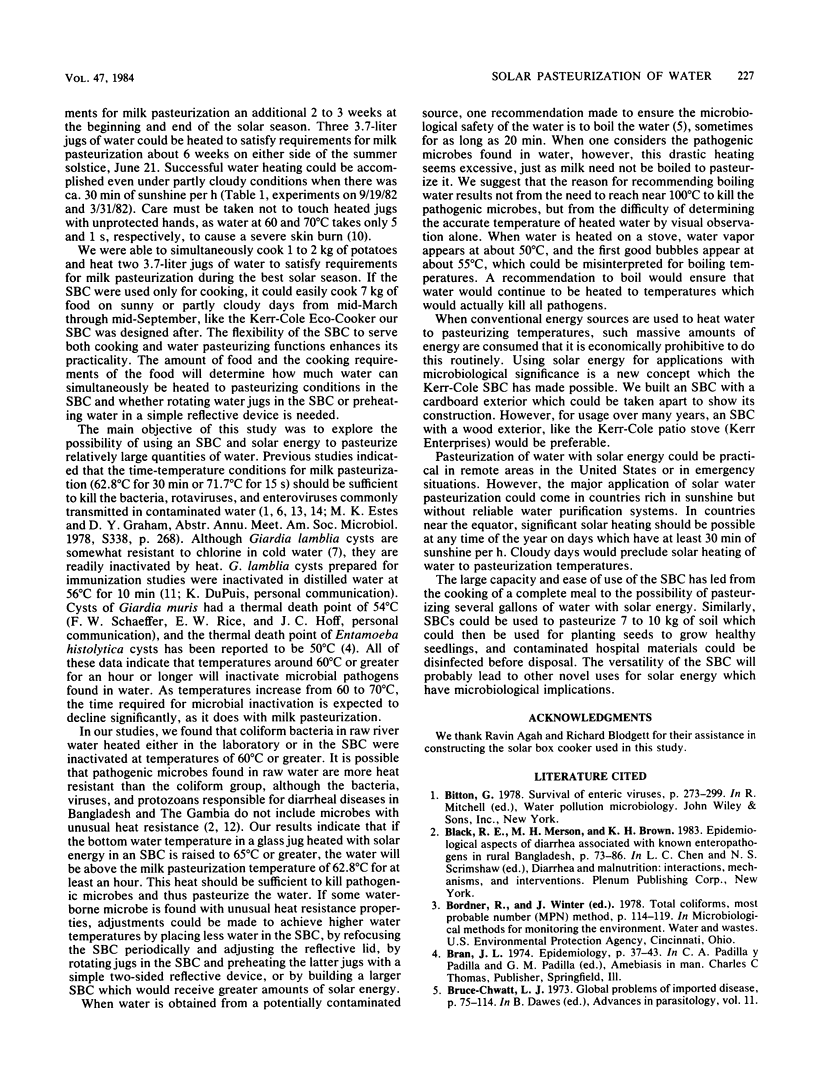
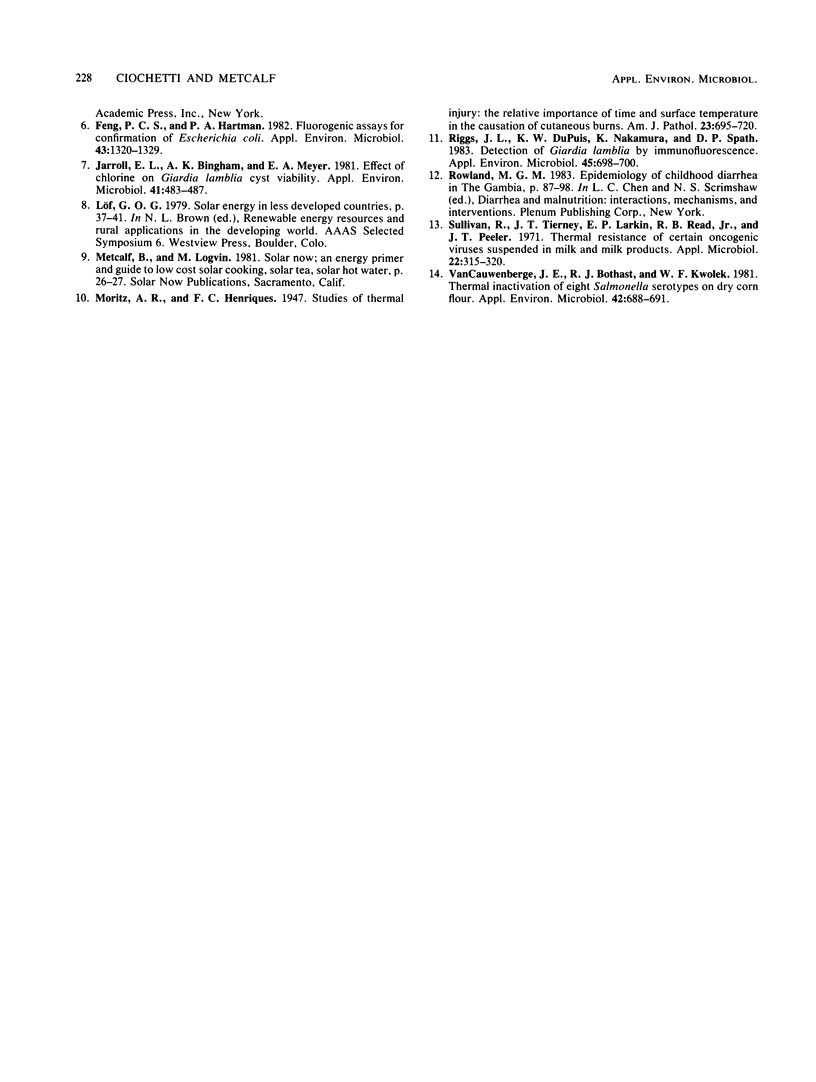
Selected References
These references are in PubMed. This may not be the complete list of references from this article.
- Bruce-Chwatt L. J. Global problems of imported disease. Adv Parasitol. 1973;11(0):75–114. doi: 10.1016/s0065-308x(08)60185-2. [DOI] [PubMed] [Google Scholar]
- Feng P. C., Hartman P. A. Fluorogenic assays for immediate confirmation of Escherichia coli. Appl Environ Microbiol. 1982 Jun;43(6):1320–1329. doi: 10.1128/aem.43.6.1320-1329.1982. [DOI] [PMC free article] [PubMed] [Google Scholar]
- Jarroll E. L., Bingham A. K., Meyer E. A. Effect of chlorine on Giardia lamblia cyst viability. Appl Environ Microbiol. 1981 Feb;41(2):483–487. doi: 10.1128/aem.41.2.483-487.1981. [DOI] [PMC free article] [PubMed] [Google Scholar]
- Moritz A. R., Henriques F. C. Studies of Thermal Injury: II. The Relative Importance of Time and Surface Temperature in the Causation of Cutaneous Burns. Am J Pathol. 1947 Sep;23(5):695–720. [PMC free article] [PubMed] [Google Scholar]
- Riggs J. L., Dupuis K. W., Nakamura K., Spath D. P. Detection of Giardia lamblia by immunofluorescence. Appl Environ Microbiol. 1983 Feb;45(2):698–700. doi: 10.1128/aem.45.2.698-700.1983. [DOI] [PMC free article] [PubMed] [Google Scholar]
- Sullivan R., Tierney J. T., Larkin E. P., Read R. B., Jr, Peeler J. T. Thermal resistance of certain oncogenic viruses suspended in milk and milk products. Appl Microbiol. 1971 Sep;22(3):315–320. doi: 10.1128/am.22.3.315-320.1971. [DOI] [PMC free article] [PubMed] [Google Scholar]
- VanCauwenberge J. E., Bothast R. J., Kwolek W. F. Thermal inactivation of eight Salmonella serotypes on dry corn flour. Appl Environ Microbiol. 1981 Oct;42(4):688–691. doi: 10.1128/aem.42.4.688-691.1981. [DOI] [PMC free article] [PubMed] [Google Scholar]


